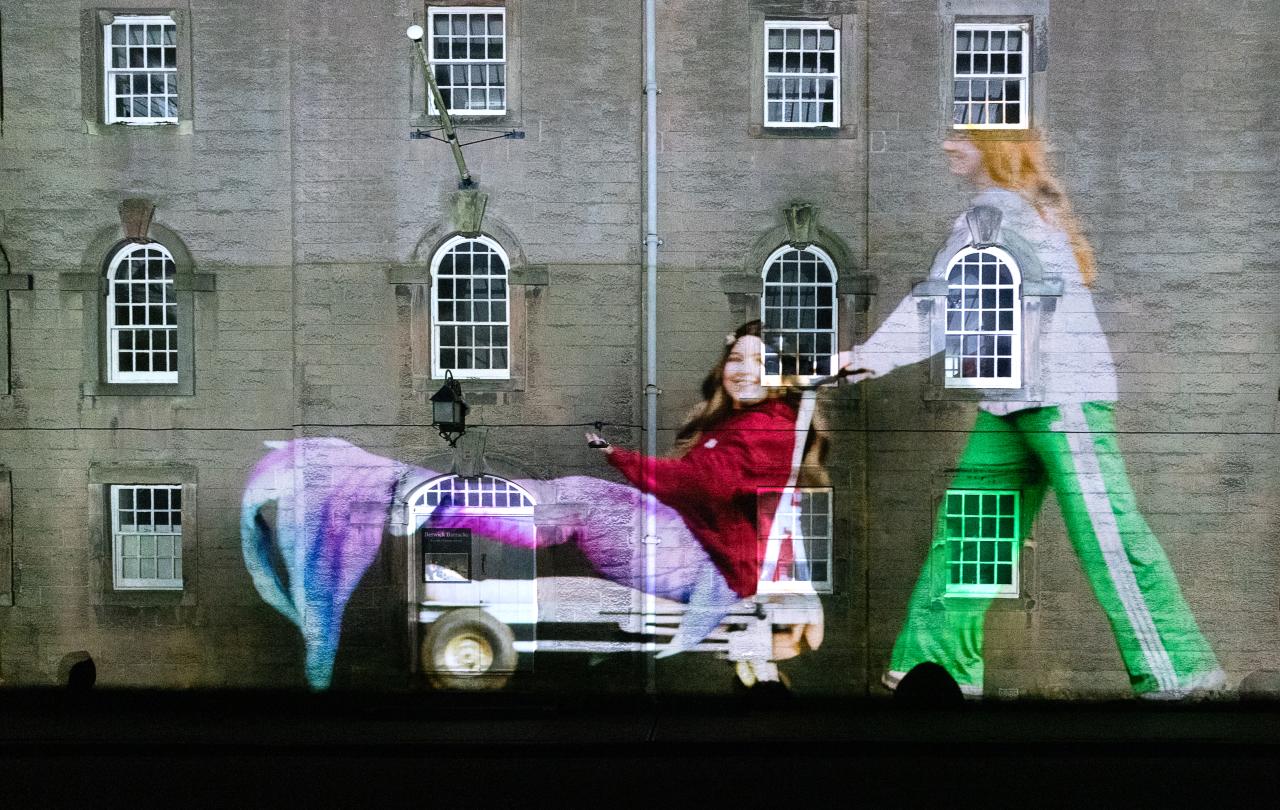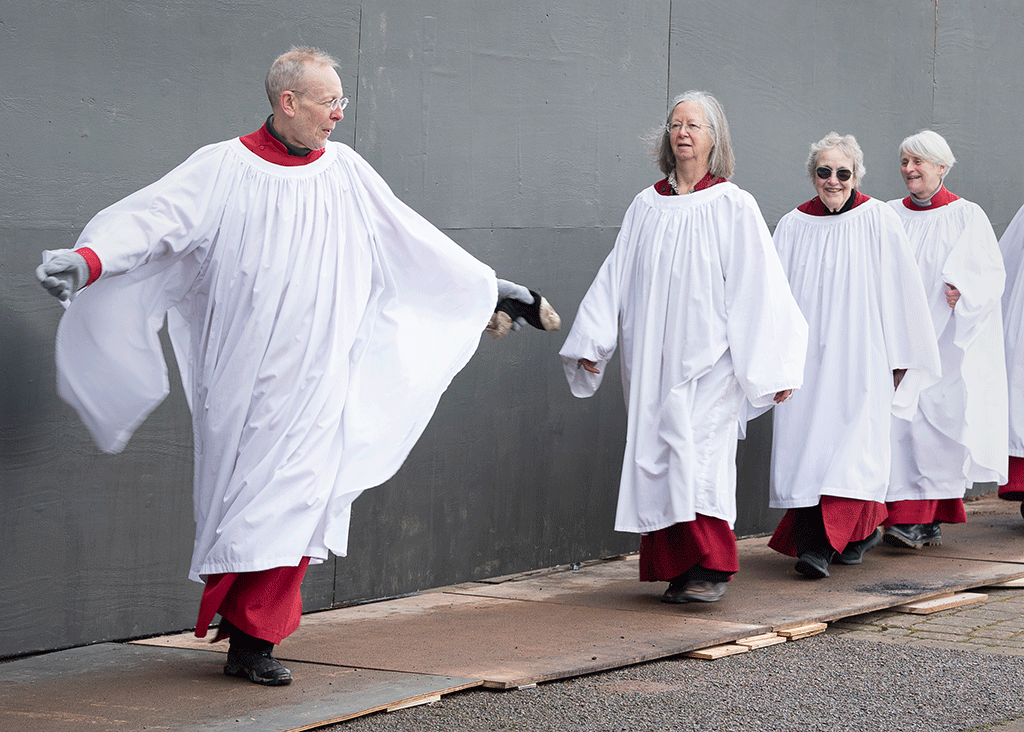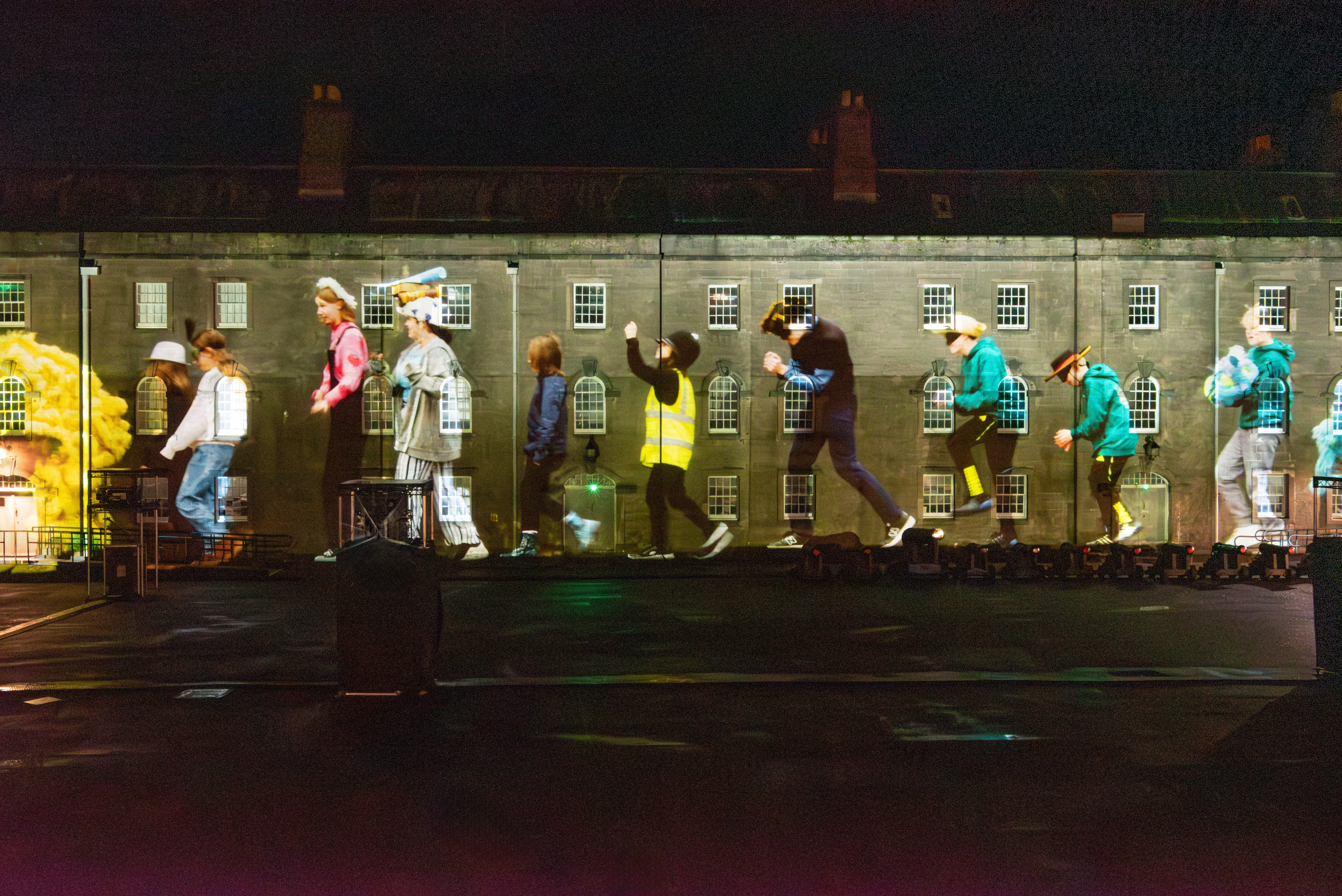
It was the arrival of a single, memorable couple that prompted churches in East Acton, West London, to recognise their responsibility to care for the growing numbers of asylum seekers being housed in the area, according to Jon Westall. The husband of the pair, who had fled persecution in El Salvador, in central America, was named José (Joseph), according to Westall, a Church of England vicar in the area. José was accompanied by his wife María (Mary), who was, Westall recalls, “heavily pregnant”. The couple arrived at one of the area’s churches for their Christmas services in 2021.
When they came to the church, Westall says, José and María were among 400 people living in a local hostel turned into housing for people awaiting decisions on their requests for refugee status. The status, which allows recipients permanent leave to remain in the UK, is awarded to those that prove they have fled danger or persecution. The couple’s arrival struck local Christians thanks to its clear symbolism, Westall recalls. But it also left them initially unsure what best to do.
Nearly two years on, the church that José and María visited hosts a weekly drop-in for asylum seekers organised by East Acton Support Enterprise, a new charity set up with the backing of a local support group for would-be refugees. Westall, who is a trustee, says that Ease’s volunteers are a “right old mixture” of people of different faiths and none. The group seeks to support the hundreds of people in the Acton and Ealing areas housed in hostels and hotels while awaiting rulings on their asylum applications. Since the summer, it has also been grappling with the effects of new Home Office policies that mean people who succeed in their asylum claims often find themselves evicted from their temporary accommodation with as little as seven days’ notice.
“It’s the whole community. These people are very passionate, very enthusiastic. They listen. They talk.”
The effort in Acton is one of scores across the UK helping refugees that is hosted in a local church and that draws heavily on church volunteers. Westall says that, from church people’s point of view, they became involved in the nascent project because it touched them “quite deeply really” to meet José and María at Christmas. Ease prefers not to publicise the location of its drop-in, to avoid attracting attention from demonstrators against migration.
“Jesus is a refugee,” Westall says. “There were just resonances really.”
One of his clearest recent memories is of being called to help a man from Syria who had just been evicted from accommodation in the nearby west London neighbourhood of Hillingdon, with only five days’ notice.
“He was standing on the street corner in Hillingdon with all his bags, absolutely paralysed with fear, this guy in his mid to late fifties,” Westall recalls.
Sara Nathan, another trustee of Ease, says the drop-in opened at a critical time. She approached the church about using its facilities in January 2022, shortly after José and María’s first visit, after being asked by West London Welcome, another support group, to set up a drop-in in Acton. A new facility was needed to relieve strain West London Welcome’s facility in Hammersmith. Nathan, an active member of West London Synagogue, says the first Ease drop-in session, in February 2022, took place just in time for a surge in demand to help refugees.
“We set up to start and the day we started was the day Putin invaded Ukraine,” she says.
The group has been “running to stand still” ever since, under Lissa Pelham, the group’s co-ordinator, Nathan adds.
“It has been growing considerably,” she says, adding that the group became a stand-alone charity, separate from West London Welcome, in September this year.
One regular attender at the drop-in, Sobhan, an engineer from Afghanistan, says he values the mix of practical help and emotional support on offer. Sobhan – not his real name - was studying in the UK for a master’s degree when Kabul fell to the Taliban. Because his family was closely involved in the previous Afghan government, his life would be in danger if he returned, he says.
He adds that it is “very nice” of Ease to organise the drop-in centre, which offers people staying in local hotels and other refugee accommodation free food, sanitary products and other help. The support supplements the £45 a week living allowance that those awaiting decisions receive from the Home Office.
However, the drop-in is “more than just the help”, Sobhan says.
“It’s the whole community,” he says. “These people are very passionate, very enthusiastic. They listen. They talk.”
Involvement in Ease has made her more aware of the real nature of the problems facing people awaiting asylum decisions and more anxious to do something about them.
The complexity of the challenges facing Ease is clear at a drop-in session when Pelham holds her weekly briefing for the 20 volunteers present to help around 100 clients. Pelham starts by asking volunteers to ensure anyone new attending the drop-in is resident in Ealing. The checks are necessary because supplies are limited and there is a risk that asylum seekers travelling from other boroughs will take what is on offer and leave none for the people most dependent on Ease.
Pelham goes on to impress on volunteers the rules about evictions from asylum accommodation. The warning is necessary because a Home Office drive to clear the hotels housing many of the tens of thousands of people awaiting asylum rulings has prompted a cut in the notice given to successful applicants – those granted leave to settle in the UK - to leave the place they have been housed.
Successful applicants used to have 28 days from the issuing of their residence permit to leave the accommodation – already a demanding timeline given the need to secure a bank account, deposit for rent and means of paying the rent. Since August this year, however, they have been given only seven days from the issuing of the decision. Because the decision is issued by letter to people living in often crowded and chaotic hotels, if applicants receive their letters late or not at all, as with the Syrian man that Westall helped, the notice period can be shorter or non-existent.
The change of policy is likely to affect many of the drop-in centre’s clients because as many as 68 per cent of initial decisions on asylum claims in 2022 decided that the person had a genuine claim to asylum. A substantial further proportion are likely to win the status on appeal – around half of completed appeals were successful in some recent years.
Pelham reminds the volunteers that at times of freezing weather landlords are obliged to give tenants an extra three days’ notice of eviction. She also reminds volunteers that there should be no evictions over the Christmas period, between December 23 and January 2.
However, there is a resigned recognition that some landlords will ignore the rules. Nathan has brought to the drop-in session a compact tent to hand out to anyone with no better option. A group of 10 Eritrean refugees have been sleeping under a nearby road flyover, she says. She has also been working to house evicted refugees through Refugees at Home, a charity that places refugees in volunteers’ homes. Nathan herself helped to establish Refugees at Home in 2016 and says new volunteers have come forward as a result of the surge in evictions.
Pelham asks volunteers to ensure the details of any clients reduced to sleeping on the streets are recorded.
“It keeps getting worse,” Pelham tells them. “It really feels that way.”
The difficult circumstances and challenging policy background do not noticeably damp the atmosphere at the drop-in, however. In front of a side altar in the church, one would-be refugee uses a borrowed guitar to serenade those present with a string of classic songs such as Elvis Presley’s Baby, 'Let’s Play House'. Some attendees attend an art therapy session, while others work at their English.
One Christian volunteer, Charlotte Aldridge, says involvement in Ease has made her more aware of the real nature of the problems facing people awaiting asylum decisions and more anxious to do something about them.
“I suppose from a Christian point of view, I feel it puts the gospel into practice,” Aldridge says. “It’s nice to be part of a positive project that’s doing something practical to help people in the area.”
“They’re in the UK now. If a British person is nice to them then understands them, that’s a very relieving thing mentally.”
Westall acknowledges that asylum-seekers’ problems are a matter of acute political controversy. There are people among the attendees at the drop-in who made clandestine crossings to the UK by means such as small boats to lodge their asylum claims.
The vicar insists the asylum-seekers he meets have not come to the UK just in search of a better life but have genuinely fled trauma and situations that would prompt anyone to flee. He reports few complaints from local people about the church’s work.
“There aren’t many people who stop me and say they shouldn’t be here,” Westall says, adding that the congregation of the church that hosts the drop-in has been “very supportive”.
Sobhan, who has just received refugee status and is looking for work, says it is a “great thing” that Ease offers companionship to refugees living in the area.
“They’re in the UK now,” he says of the refugees. “If a British person is nice to them then understands them, that’s a very relieving thing mentally.”
Westall, meanwhile, along with his wife, is a godparent to José and María’s baby. The family are now living elsewhere in the UK.
The vicar says, however, that the meeting with the couple provided a window for local Christians onto a world they had not known at all.
“I’ve learned a huge amount from the people I’ve met and the people I’m getting to know,” he says.









